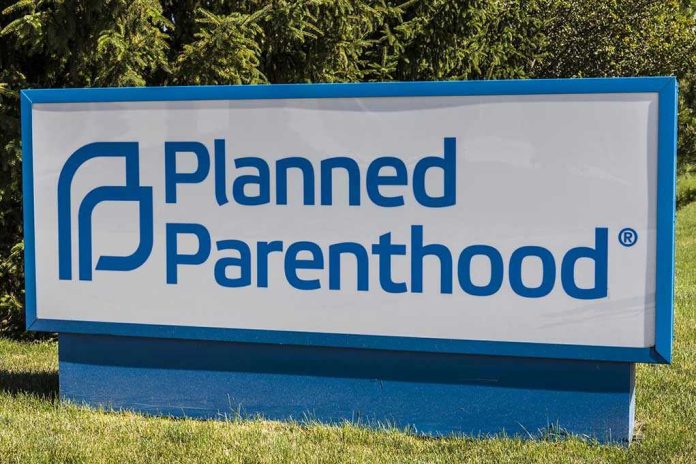
Planned Parenthood affiliates in states like Colorado and Washington, D.C. have slammed the brakes on Medicaid, leaving tens of thousands of low-income patients scrambling, all thanks to a Supreme Court decision and a Republican-led Congress finally following through on promises to cut taxpayer funding for the abortion giant.
At a Glance
- Supreme Court ruled states can exclude Planned Parenthood from Medicaid; patients cannot sue to block it.
- Congress passed a Republican budget bill stripping Planned Parenthood of federal Medicaid funds.
- Some Planned Parenthood clinics immediately stopped taking Medicaid, canceling patient appointments and risking closure.
- A federal judge granted a 14-day temporary restraining order, but legal uncertainty remains for clinics and patients.
Supreme Court Empowers States to Cut Ties with Planned Parenthood
On June 26, 2025, the Supreme Court delivered a 6-3 decision that will go down in the books as a game-changer for state rights and a major defeat for Planned Parenthood. The Court ruled that states can exclude Planned Parenthood from their Medicaid programs. The kicker? Medicaid patients themselves cannot sue states to keep their favorite abortion provider in the funding stream. For years, federal courts swatted down state attempts to defund Planned Parenthood, but the Court finally handed states the authority to decide who gets taxpayer dollars. So, after decades of conservative lawmakers banging their heads against the wall, the legal tide has turned. The message is clear: if a state wants to cut the cord, there’s no more federal safety net for Planned Parenthood.
This ruling didn’t land in a vacuum. It comes after years of frustration from Americans who watched their tax dollars funnel to an organization that, no matter how you spin it, is still the nation’s largest abortion provider. The Hyde Amendment may prohibit federal funds from paying directly for abortions, but everyone knows money is fungible. Conservatives have long pointed out that every dollar to Planned Parenthood for “other services” just frees up resources for abortion. Now, states have the legal green light to draw a hard line.
Congressional Majority Follows Through on Defunding Promise
Congress wasted no time after the Supreme Court decision. On July 4, 2025, the Republican majority passed a budget reconciliation bill that yanked federal Medicaid funding from Planned Parenthood. The reconciliation process—one of the rare ways to bypass a Senate filibuster—let the GOP majority move swiftly. The provision hit Planned Parenthood where it hurts: its bottom line. The fallout was immediate and dramatic. Planned Parenthood affiliates in Colorado and D.C. posted notices to patients: Medicaid was no longer accepted, effective immediately. Appointments were canceled, and chaos erupted for low-income patients who counted on these clinics for everything from cancer screenings to STI testing.
Planned Parenthood’s leadership, predictably, called the move “cruel, harmful, and inhumane,” warning that millions would lose care. But critics of taxpayer funding for the organization saw something else: a long-overdue correction. The bill’s sponsors made it clear: if you want to provide abortions, you can do it on your own dime—not the American taxpayer’s.
Legal Ping-Pong and Patient Impact
Not to be outdone, Planned Parenthood filed a lawsuit on July 7, 2025, hoping to claw back its funding through the courts. A federal judge handed them a temporary win—a 14-day restraining order blocking the cuts. Some affiliates, like those in Florida, resumed accepting Medicaid patients. Others hesitated, citing legal uncertainty and the risk of losing more money if the court flips the switch again. This left patients in a state of limbo: one day their appointments are canceled, the next day maybe not, depending on which state they live in and which judge has the last word.
Affiliates warned that as many as 200 clinics are at risk of shutting their doors. For Medicaid patients, particularly in states quick to pull the plug, the disruption has been immediate and painful. Clinics have canceled appointments, and staff are left to answer the phones and tell patients to look elsewhere. But for pro-life advocates and fiscal conservatives, the mess is the predictable result of finally ending the gravy train for a politically divisive organization.
Broader Implications for Health Care and Federalism
The short-term fallout is chaos and confusion for patients and providers. But the long-term picture is even more significant. The Supreme Court’s ruling sets a precedent that could embolden states to exclude other controversial providers from Medicaid networks. Congressional action shows that when lawmakers actually keep their promises, entire industries can be upended. The legal landscape is unsettled, to say the least, and the next few weeks will see more filings, more restraining orders, and more uncertainty.
For those who believe federalism means states should control their own Medicaid programs—and that taxpayer dollars shouldn’t prop up organizations at odds with their values—this is a rare and decisive victory. For those convinced that every penny not spent on Planned Parenthood is a threat to women’s health, the sky is falling. But one thing is crystal clear: the era of endless government checks for Planned Parenthood is over, and the battle for the future of reproductive health funding is just getting started.



